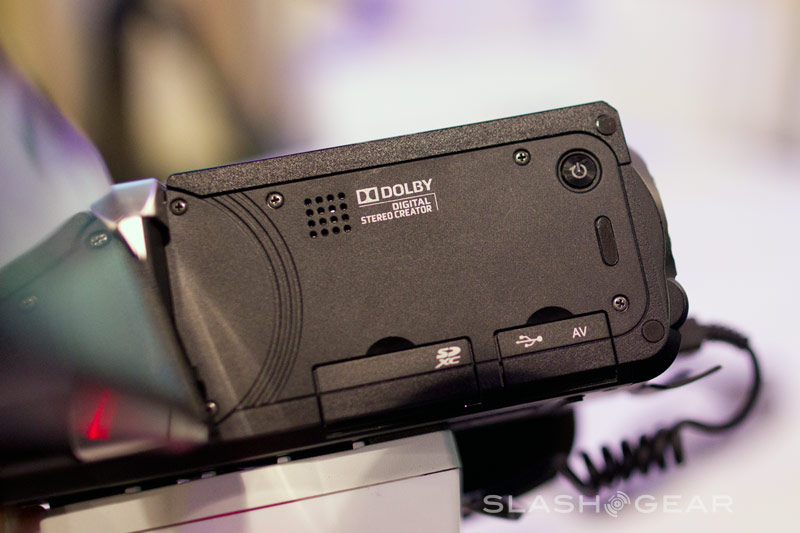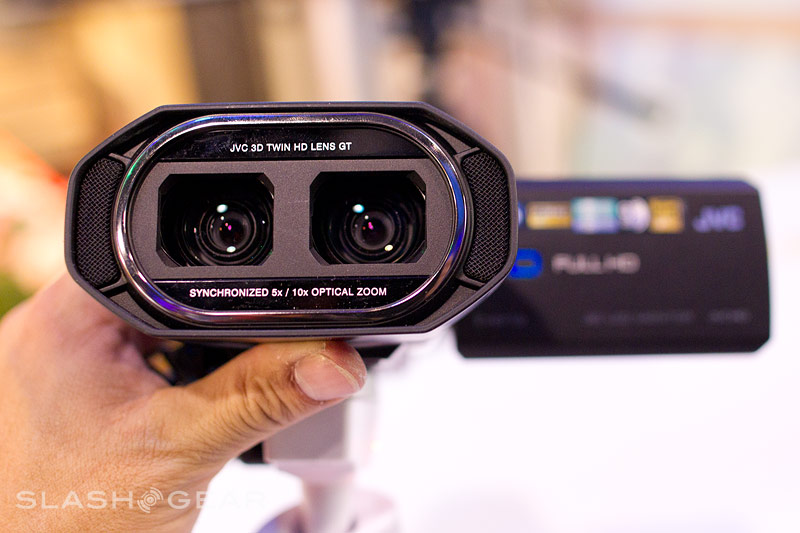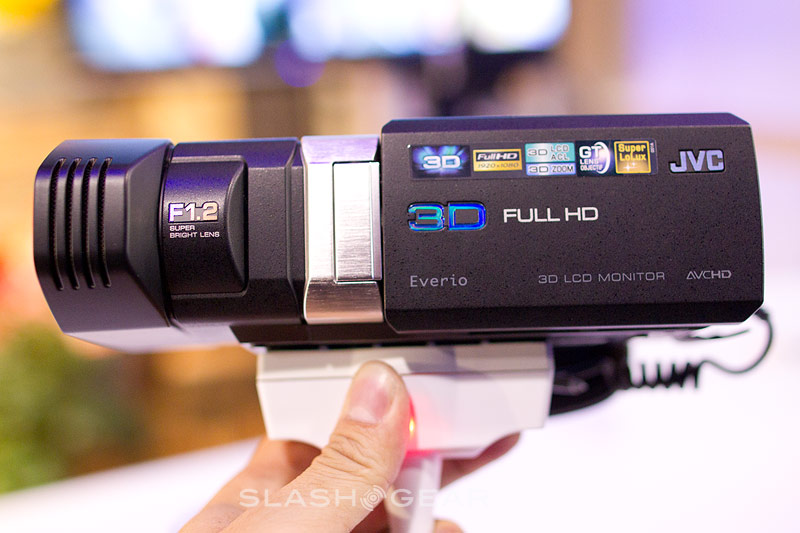JVC GS-TD1 Full HD 3D Camcorder hands-on
JVC's new Everio GS-TD1 camcorder isn't the first 3D example we've seen, but it is the first to manage Full HD 3D recording. The new JVC Falconbird image processing engine is paired with two 3.32-megapixel CMOS sensors, each capable of 1920 x 1080i, while even the preview display is 3D-capable. Check out our hands-on impressions after the cut.
The Everio GS-TD1 looks bulky, but it's actually relatively lightweight. Unlike Panasonic's HDC-TC750 it's not designed to lose the 3D lens section, but the weight has been well balanced along the length of the camcorder and it doesn't feel front-heavy. Storage and connectivity are hidden behind the flip-out LCD display. That has a touchscreen layer for control over most of the settings, and it's crystal clear and responsive. Most importantly, though, is that it uses glasses-free 3D so that you can see exactly what 3D effect you're getting while recording, rather than – as with the TC750 – having to wait until reviewing footage later. The 3.5-inch panel uses a parallax barrier to split up the left and right images.
Falconbird is a JVC exclusive, and supposedly doubles the power from previous chips. It debuts in the GS-TD1, but will be spreading through the company's 3D-capable line-up; the same sensor, Kari Bearnarth, senior VP of America JVC marketing told us, is powerful enough to handle 4k2k recording.
It's obviously tricky to judge image quality from a brief hands-on play, but what we saw in JVC's booth impressed us. There's no compromise to the 3D element – you still get HD, unlike other systems which split the resolution of a single sensor – and it looks crisp and bright when viewed full-screen. The JVC Everio GS-TD1 will go on sale in March 2011. For $2,000, it comes equipped with 64GB of internal flash storage space, image stabilizer, 3D sound and a pair of ultra fast, high res, extra-low-dispersion glasses, and a round-iris diaphragm HD GT F1.2 lens.




